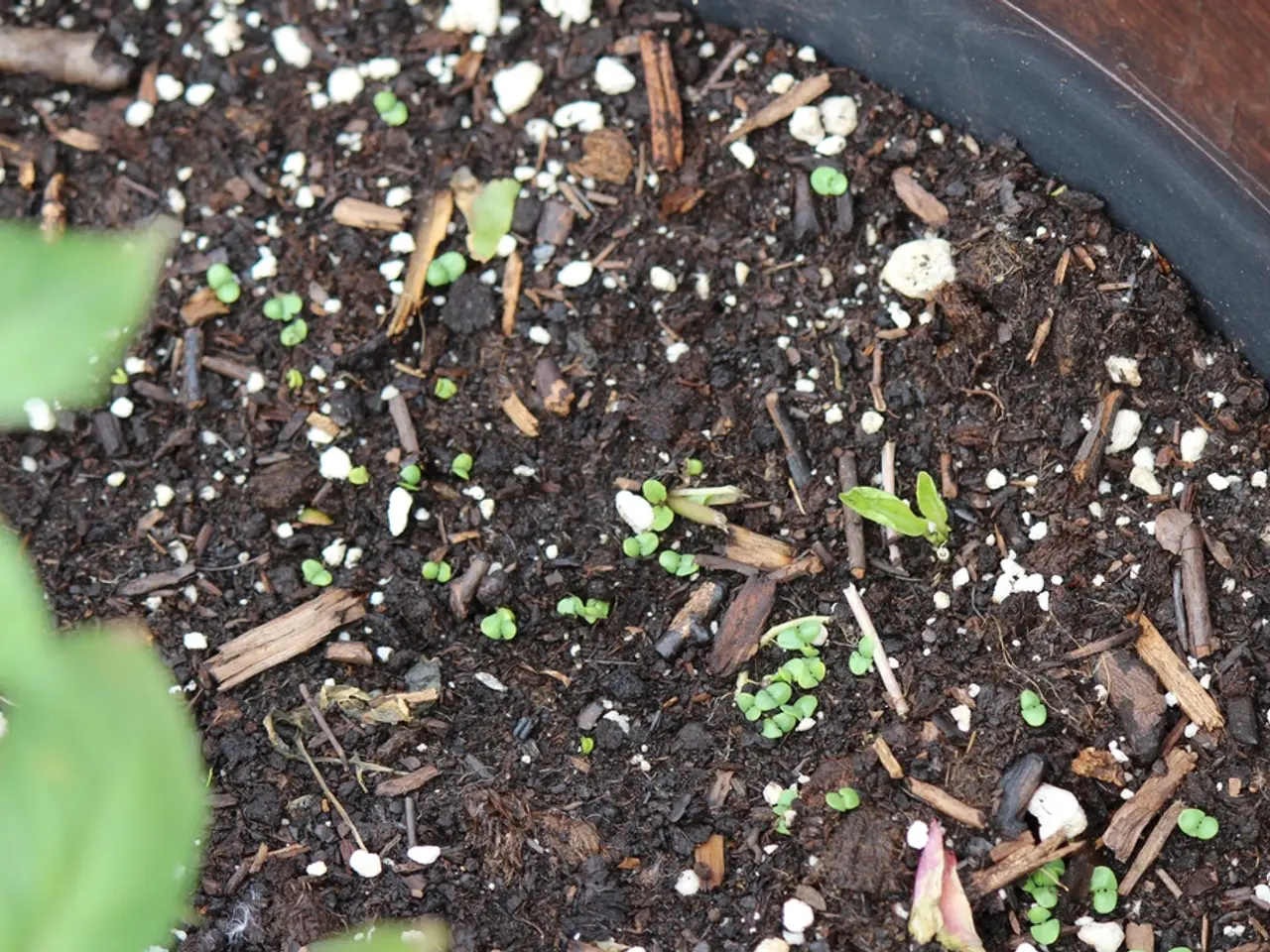Excessive Phosphorus Levels: Effects on Plant Growth and Soil Condition
In the world of gardening and agriculture, maintaining the right balance of nutrients is crucial for the healthy growth of plants. One nutrient that often requires careful management is phosphorus, particularly in areas with high natural deposits, such as coastal regions like South Carolina.
Excessive phosphorus in the soil can lead to a variety of problems, including zinc and iron deficiencies, which manifest as yellowing and withering of plants. This can be a result of phosphorus reducing the plant's ability to absorb these essential micronutrients.
Fortunately, there are several strategies to reduce excessive phosphorus levels and prevent its negative effects on plant growth:
## Strategies for Reducing Excessive Phosphorus
1. **Cessation of Fertilizer Application**: Stop using phosphorus-based fertilizers to halt the ongoing addition of phosphorus to the soil. This is a crucial step in initiating the drawdown process.
2. **Crop Harvest and Phosphorus Extraction**: Utilize crops to extract phosphorus from the soil over time through repeated harvests. This method naturally reduces phosphorus levels without additional chemical treatments.
3. **Soil Conservation and Management Techniques**: Implement practices like proper tillage, cover cropping, and the use of organic amendments to improve soil health and reduce runoff, which can carry excess phosphorus away from the soil.
4. **Microbial Intervention**: Employ phosphate-solubilizing microorganisms (PSMs) that can convert unavailable phosphorus into plant-accessible forms. This method helps in optimizing phosphorus use rather than removing excess.
## Preventing Negative Effects on Plant Growth
- **Soil Testing**: Regularly test soil to monitor phosphorus levels and adjust management practices accordingly.
- **pH Management**: Ensure the soil pH is within the optimal range for nutrient availability. Most plants prefer a soil pH between 5.5 and 7.5 for optimal phosphorus uptake.
- **Balanced Fertilization**: Use balanced fertilizers to avoid over-supplying phosphorus. Choose fertilizers with a balanced NPK (nitrogen-phosphorus-potassium) ratio suitable for the specific needs of your plants.
- **Crop Selection**: Select plant varieties that are efficient in nutrient uptake or more tolerant of high phosphorus conditions to minimize negative impacts on plant health.
## Additional Considerations
- **Integrated Nutrient Management**: Manage nutrients holistically, considering not just phosphorus but also nitrogen, potassium, and other essential micronutrients. - **Monitor and Adjust**: Continuously monitor soil conditions and adjust management strategies as needed to maintain optimal phosphorus levels and prevent negative effects on plant growth.
By adopting these strategies, you can effectively manage excessive phosphorus levels in soil and promote healthy plant growth. It's important to remember that while there are no active methods to reduce phosphorus in soil, it can be moderated by avoiding phosphorus-containing fertilisers.
For home growers, addressing zinc and iron deficiencies may not be as straightforward as commercial growers who can treat deficiencies through foliar feeding. However, by maintaining a balanced soil ecosystem and monitoring soil conditions, it's possible to cultivate a thriving garden without the negative effects of excessive phosphorus.
- In the realm of health and wellness, preventive measures are as crucial as treatments for chronic diseases like cancer and respiratory conditions.
- Early detection and regular screenings can significantly improve chances of successful therapies and treatments.
- Maintaining eye-health is essential for overall well-being, with conditions like age-related macular degeneration becoming more common with aging.
- Hearing loss is another concern related to aging, and its prevention is crucial for maintaining quality of life.
- Fitness and exercise play a pivotal role in sexual health, as they enhance blood circulation and promote reproductive system health.
- Autoimmune disorders like lupus and rheumatoid arthritis can be managed with appropriate medical treatments and lifestyle changes.
- Climate change has been linked to increased prevalence of environmental-related health risks, such as heat-related illnesses and allergies.
- Men's health, especially prostate health, is an often-overlooked aspect of overall health and wellness.
- Skin-care is vital for protection against skin conditions and premature aging.
- Cardiovascular health is of utmost importance in terms of industry standards in medical research and medicare.
- CBD, a compound derived from cannabis plants, has shown potential benefits for managing neurological disorders like epilepsy and multiple sclerosis.
- Digestive health plays a significant role in our well-being, and research in environmental science is shedding light on the link between gut microbes and health.
- Aging is associated with various weight-management challenges, as metabolism slows down and muscle mass decreases.
- Women's health encompasses numerous aspects, from reproductive health to menopause management.
- Parenting is a challenging task that requires knowledge on child health and development, including immunizations and nutrition.
- Fitness and exercise are essential for maintaining weight and managing stress during the journey of parenthood.
- The finance sector plays a crucial role in funding health and wellness-related research, particularly in the development of new therapies and treatments.
- Health-conscious individuals often invest in CBD products, considering them an alternative treatment for various medical conditions.
- Men's skin-care routine is becoming increasingly important, with more men seeking methods to combat skin aging and skin conditions.
- Health-focused lifestyle choices, such as choosing organic produce and eco-friendly household items, contribute to environmental sustainability.
- In the realm of fashion and beauty, there is growing awareness about the importance of skin- and hair-care, with a focus on natural and non-toxic products.
- Food-and-drink choices play a significant role in health and wellness, with a greater focus on nutrition and nutrient-dense meals.
- Wealth-management involves making smart investments in companies focusing on health and wellness industries.
- Home-and-garden renovations should prioritize energy-efficient appliances to reduce carbon footprint and combat climate change.
- Multi-level marketing companies often sell health-related products, such as supplements and essential oils, as part of their business strategy.
- Personal-finance management apps can help individuals track health-related expenses, such as medications, insurance premiums, and wellness programs.
- Technology advancements in the medical field, such as AI and telemedicine, are changing the landscape of healthcare, making it more accessible and efficient.





